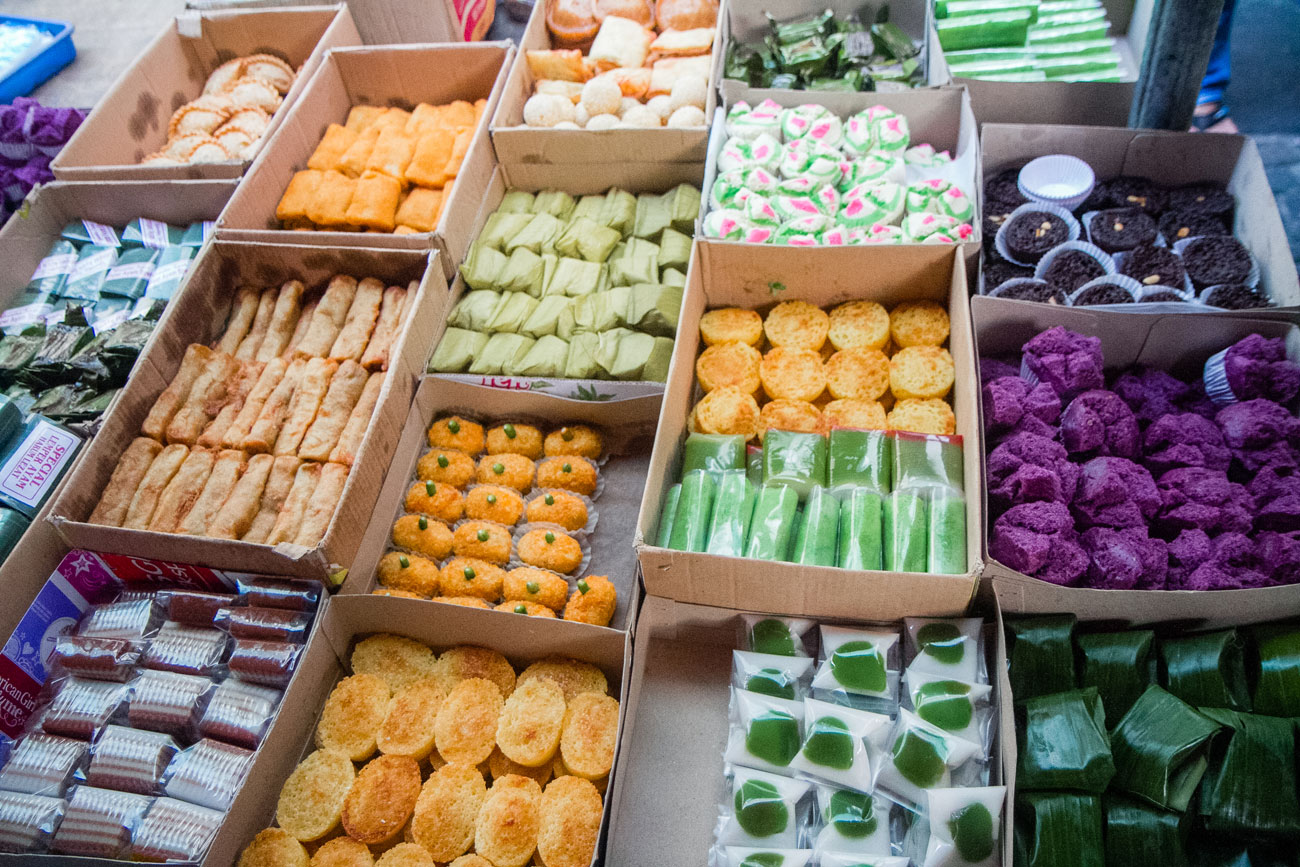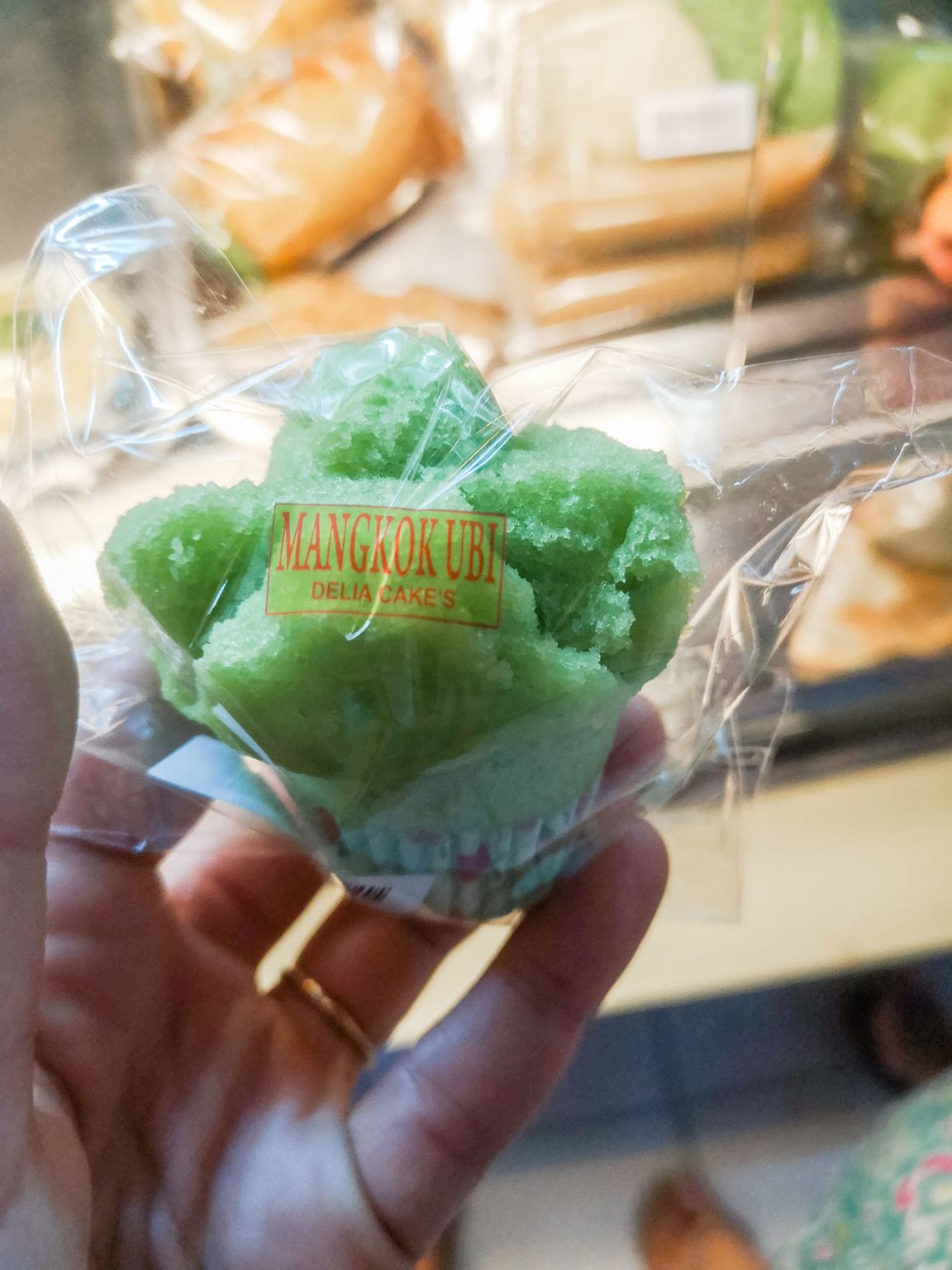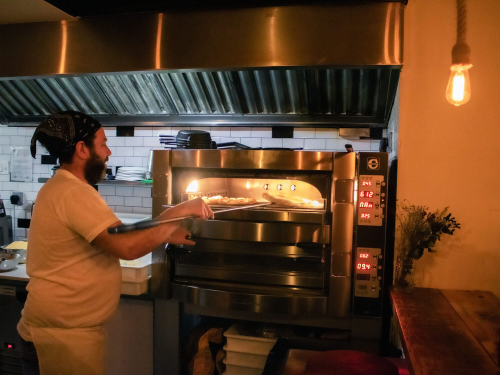
In the Southeastern portion of the world, a region of spices, flavors, and fresh ingredients provide entry into a world that is filled with centuries of tradition, dynamic cultural institutions, and people who’ve continued carrying the stories of history and heritage into a vastly changing world. Near the Southernmost point of Southeast Asia sits Indonesia, an archipelago consisting of more than 17,000 islands, more than 300 different spoken languages, and, as the world’s fourth most populous country, more than 270 million people. Thus, when it comes to the country’s food, things get exciting, and diverse. In “Coconut & Sambal,” half-Indonesian and half-Australian chef Lara Lee has brought Indonesian food to live in a unique and colorful way. She provides recipes that span the cuisine, including savory snacks; soups and rice; vegetables, tofu, and tempeh; fish and seafood; poultry and eggs; meat; sambal, a beloved Indonesian chili paste; basic recipes; and sweets.
“It’s really been amazing to see the response to the book, and to see so many people respond in such a positive way.”
When cookbook author and chef Lara Lee was growing up in Sydney, Australia, her Auntie Linda, an Indonesian woman who greatly impacted Lara’s life, would take Lee to some of the local Indonesian sweets shops. There, she’d get kue mangkok, an Indonesia dessert that resembles a cupcake. The steamed treat was often bright pink or green, and the top was sliced in a way that opened to the shape of a blooming flower or clover, delighting a young Lara. The treat, often sweetened with palm sugar, and sometimes made with fermented cassava in Indonesia, was one of many memories that Lara Lee carried with her into adulthood and used as inspiration as she became a chef and best-selling cookbook author.



Photos by Lara Lee
“This book is a tiny slice of what Indonesian cuisine is, which is just incredibly diverse,” said Lee of her book. “Every region that you go to across thousands of islands have different, distinct flavors. I wanted my readers to discover this cuisine just like I did.”
Though Indonesian cuisine is flavorful and wide-ranging, it is not particularly well-known in the United States. With just over 113,000 Indonesians living in the United States — most of whom live in major cities like Los Angeles, New York, Washington, D.C., and Houston — the culinary traditions simply haven’t been as exposed as other Southeast cuisines, like Vietnamese or Thai cuisine. Still, Indonesian chefs and food writers like Sri Owen, William Wongso, and most recently, “Coconut & Sambal: Recipes from My Indonesian Kitchen” author Lara Lee, have contributed monumental work in both preserving the cuisine, and introducing it to global audiences.” “Coconut & Sambal” is an equally mesmerizing and enticing culinary expedition through a nation usually typified by its beaches, animals, ancient temples, and natural attractions, rather than its remarkable cuisines. Merging her familial history with the complex history of the archipelago, Lee, a half Indonesian, half Australian author, provides dozens of Indonesian recipes, all a harmonic ode to the most populous nation in Southeast Asia.
“I want people to open this book — people who are familiar with Indonesian and people who have never eaten Indonesian food — and get a broad taste of Indonesian cuisine,” said Lee. “We are more than one city or island, and our food reflects that incredible diversity.”


Photos by Lara Lee
Lee’s work is a welcome contribution to a cuisine that has unfortunately been somewhat overlooked in the Western world, and even in the Southeast Asian region. Food writer, editor, and guest of Netflix’s Street Food – Indonesia, Kevindra Prianto Soemantri, views Lee as a modern ambassador for Indonesian cooking.
“This book is a dream for our culture,” Soemantri said. “The book could appear in the same shelves with Alice Waters, Julia Child, Toni Tipton-Martin — all of these cultural ambassadors who brilliantly show and tell other people in other parts of the world about a place, about a culture, and about a people.
“People globally are proud of their heritage, and more and more people want to understand their roots and how roots and cooking are connected. Indonesian chefs want to be a part of that,” Soemantri continued. “We are the largest country in Southeast Asia, and a book as well researched and written as “Coconut & Sambal” gives us the power to promote our culinary heritage in the same way as other cultures.”


Ms. Lee’s discovery began around the age of five. Born and raised in Sydney, Australia by a Chinese-Indonesian father and an Australian mother, Ms. Lee’s introduction to Indonesian food began in the formative years of her childhood, when her grandmother, “Popo” (Margaret Thali) moved from Indonesia to live with Lee’s family in Australia.
“Since we lived in Australia, my dad really strongly felt that it would be important to have a Western upbringing,” said Lee. “But when my grandmother came to live with us, she brought with her all of that wonderful Indonesian culture I hadn’t really been exposed to up until that point, and a big part of that was her passion for food.”
Ms. Lee’s grandmother, who is from West Timor, prepared meals and desserts like roasted Balinese chicken, gado gado, rendang, and pandan cake, while a young Lara watched. Often set against the backdrop of kroncong, soft, romantic genre of Indonesian music, her father would barbecue classic dishes like her grandmother’s sate ayam, while Popo would prepare peanut sauce — a common condiment for meals — and babi kecap, a sticky pork stew with caramelized onions. Ms. Lee ultimately decided to write a cookbook that reflected her grandmother’s life, and the culinary variety that defined the nation. Her sweets section of the book is perhaps one of the most unique ways that Lee promotes the diverse range of Indonesian cooking, and the possibilities of the cuisine.
"She brought with her all of that wonderful Indonesian culture I hadn't really been exposed to up until that point, and a big part of that was her passion for food."
“The Indonesian approach to sweet food is very different to that of the West,” Lee writes in her book. “In the same way that Westerners enjoy an afternoon biscuit, you will find bite-sized Indonesian sweets offered as a welcome snack when visiting a home, often placed on a saucer with your cup of coffee or tea.”
Jajanan pasar, the Indonesian sweets Lee describes, are often found in food markets around the archipelago. Steamed, baked, or fried, the desserts range from mini cakes and pastries, to puddings and glutinous rice cake snacks. With centuries of history in nearly each confection, these snacks — many of which are bright and colorful — can be enjoyed at any time of day.
“When you kind of think about the way Indonesians eat sweets, they kind of eat sweets as a snack, from breakfast through to supper through to, after dinner, often with a cup of coffee, or something to nibble on during a meeting, or when guests come to your home, there will be a tray of these sweets welcome that guests,” said Lee. “So, sweets have a very kind of different association to Indonesians, as opposed to how we [Westerners] might think of dessert, which is to really finish off the end of the meal.”



Photos by Lara Lee
On Java’s Prambanan Temple, located in Yogyakarta, inscriptions that date back to the ninth century show some of the kues that are still sold in Indonesian markets around the world today. “There’s been a little sweet, cool cake culture in Indonesia in the ninth century. So I found the whole sweet snack kind of research fascinating because Indonesians are obsessed with the little snacks, and it’s kind of ubiquitous, they’re everywhere. There’s little snacks at the market and at people’s homes. And I really love that.”
Lee, who had traveled to Indonesia long before writing her first cookbook, spent about two years completing research for “Coconut & Sambal.” A significant portion of that time was spent trying jajanan pasar, and testing different desserts with aunties and family members in an effort to fully capture Indonesia’s sweet cuisine.
“For me when I was writing that chapter, I thought it was important to represent that side of things in terms of the great tradition that comes with those snacks.”
With such a rich sweets history that dates back centuries, it was especially important to the writer to bring some of this history — and the flavors that go along with it — to her cookbook. Sitting between Western and Indonesian culture, the cookbook author wanted readers to reframe their idea of dessert. She introduces homecooks to dadar gulung, or pandan crepes, which uses the fragrant, almost rose-like plant found in many Indonesian desserts and dishes. She brings in a delightful recipe for pisang goreng, banana fritters that I often enjoyed in warungs — tiny, often-family run food stalls or small restaurants — or at school occasions during my time as a teacher in Central Java. She transports readers to the storied streets of Yogyakarta through her recipe for klepon, coconut sticky rice balls that are typified by the green pandan leaves used to create them. She also deviates from tradition by interpreting Indonesian flavors through her own tastes. Her recipe for es krim kelapa dan jeruk npis, or coconut and lime ice cream, is one of the most simple and flavorful interpretations of homemade ice cream that smartly uses common Indonesian ingredients like coconut and lime juice. Panna cotta kelapa, dengan mangga, or coconut panna cotta with mango, is not a traditional Indonesia dessert, but makes good of Indonesia’s love for lemongrass and tropical fruits. For a chef who’s stood proudly in the Western and Eastern world, the recipes are both a respectful ode to a wide and varied cuisine, and representative of who Lee is as a person, and a cook.
“I wanted to represent, both sides of the coin for me — both sides of what I enjoy — from a sweet perspective, which is to have some Indonesian inspired desserts in a way that we might think of it in a Western sense, like a chocolate tart with some Indonesian ingredients in it, and there’s some ice creams and so on. There’s also some really lovely traditional sweet snacks that I thought were important to represent that I really enjoy eating.”


In addition to bringing Indonesian flavors to the dessert scene, Lee was also concerned about making sure desserts
were approachable.
“I thought it was important that the food felt approachable and accessible, but also that it came with a whole lot of context,” said Lee. “It was important to me that people understood why we were doing things a certain way or when things couldn’t repeat, or, on the other hand, a method has to be repeated because you only achieve a particular result that way. Providing context for those methods and techniques is so important.”
Aware that new ingredients and cooking styles could overwhelm some home cooks, Lee made an effort to simplify recipes, and provide information about the importance of different ingredients. Noting that many users can buy lesser known ingredients online if a local grocery store doesn’t have them — like glutinous rice or pandan leaves — Lee is eager to see homecooks try something new.
“When it comes to these types of recipes, sometimes when someone might look at the ingredients list, they might be put off,” said Lee. “But I think in this day and age, we can get everything online and delivered to our homes. So I think if we can get past that first hurdle, the actual act of creating the recipes is not so hard. With these things, it just takes practice, practice, practice.”
"I thought it was important that the food felt approachable and accessible, but also that it came with a whole lot of context"
In “Coconut & Sambal,” readers can find a pantry list and other suggestions from the seasoned chef that can help users get accustomed to the Southeast Asian nation’s cooking traditions.
Lee’s work has helped to re-introduce the world to the sweetness and magic of Indonesian cooking. Alongside her work on the cookbook, Lee is a co-founder of the catering company Kiwi & Roo, which catered Antipodean and Indonesian supper clubs and popups for guests like New Zealand embassy officials, an Australian Prime Minister, and even Prince Harry and Meghan Markel. Inspiring homecooks and politicians alike, it’s clear that Lee’s sweets can reach the minds — and stomachs — of people around the world.



Photos by Lara Lee
PANDAN AND COCONUT CAKE (KUE PANDAN DAN KELAPA)
This sponge cake is inspired by Lara Lee’s grandmother Popo. According to Lee, “the desiccated coconut and coconut milk in the recipe gives the fluffy sponge its light crumb and texture. The juice from the pandan leaves gives the cake a luminous leaf-green colour (if you can’t get hold of pandan leaves, try my equally delicious raspberry variation below). Finely chopping the pandan leaves ensures that you extract maximum juice and colour. I avoid pandan pastes and extracts as they taste too artificial.”
Serves 16
INGREDIENTS:
12 pandan leaves, very thinly sliced
210ml coconut milk
70g unsweetened desiccated coconut
350g unsalted butter, softened, plus extra for greasing
420g caster sugar
4 medium eggs, at room temperature
385g plain flour
31/2 tsp baking powder
Pinch of sea salt
For The Filling:
250g mascarpone cheese
To Finish:
2 tbsp unsweetened desiccated coconut Icing sugar
- Preheat the oven to 180°C/160°C fan/gas 4. Grease 2 x 20cm round, deep cake tins, then line with baking parchment on the base and sides.
- Put the sliced pandan leaves in a food processor with 100ml water and blend to a fine pulp. Push the pulp and juice through a sieve. You need 75ml of liquid, so blend the pulp with more water if you do not have enough.
- Pour the coconut milk into a saucepan and heat gently until steam rises. Remove from the heat, add the desiccated coconut and pandan juice and set aside to let the flavours infuse.
- Beat the butter and caster sugar in a mixing bowl until pale and creamy, about 3–4 minutes. Add the eggs one at a time, beating between each addition. Add the coconut and pandan mixture to the butter, sugar and eggs and combine.
- Sift the flour, baking powder and salt into a separate bowl. Add the dry ingredients to the cake mixture and fold in quickly until the mixture is no longer streaky. Divide the mixture between the cake tins and smooth the tops. Bake on the middle shelf for 35–45 minutes or until a skewer comes out clean. Allow to cool for 5 minutes in the tin, then turn out onto a wire rack to cool.
- For the filling, beat the mascarpone cheese in a bowl to loosen it, then very lightly stir through the lemon curd or raspberry jam to create swirls. Sandwich the cake halves together with the mascarpone filling. Toast the desiccated coconut for the garnish in a dry frying pan over a medium heat until golden brown. To finish, dust the top of the cake with icing sugar and scatter over the toasted coconut.
Variation: Raspberry and coconut cake
Replace the pandan with 1½ tsp vanilla extract. At the end of mixing the batter, stir through 210g fresh raspberries and cook as above.
Related Articles
-
 Travel & Culture March 16, 2020 | 6 min read Significance of Sustenance: Burlington I grew up in the shadow of the slopes in the Pocono Mountains, but the icy Pennsylvania conditions made skiing decidedly unfun for fall-prone little-ol’ me.
Travel & Culture March 16, 2020 | 6 min read Significance of Sustenance: Burlington I grew up in the shadow of the slopes in the Pocono Mountains, but the icy Pennsylvania conditions made skiing decidedly unfun for fall-prone little-ol’ me. -
 Travel & Culture April 02, 2020 | 8 min read A Brooklyn Pizzeria Fights Through COVID-19 COVID-19 hit the city like a slow-moving hurricane. We knew it was coming, but we were still in shock. Everything was uncertain.
Travel & Culture April 02, 2020 | 8 min read A Brooklyn Pizzeria Fights Through COVID-19 COVID-19 hit the city like a slow-moving hurricane. We knew it was coming, but we were still in shock. Everything was uncertain. -
 Travel & Culture June 23, 2020 | 6 min read Distinctive Process: Maori Hangi Steaming geothermal pools set against a vivid blue sky, in the middle of lush natural surroundings and a day spent soaking up indigenous Maori culture.
Travel & Culture June 23, 2020 | 6 min read Distinctive Process: Maori Hangi Steaming geothermal pools set against a vivid blue sky, in the middle of lush natural surroundings and a day spent soaking up indigenous Maori culture.
